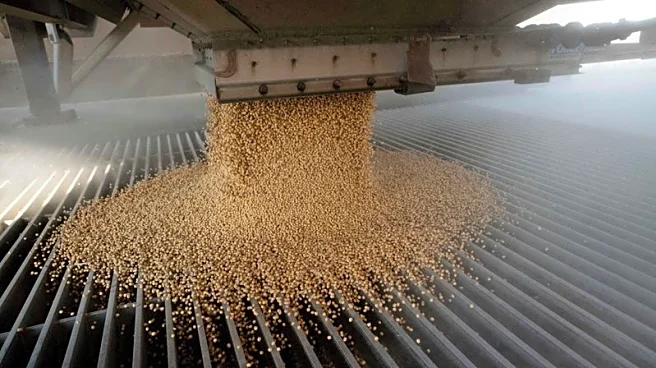What's Happening?
The U.S. Department of Agriculture (USDA) is set to release its first crop report since September, following the longest-ever U.S. government shutdown. This report will provide updated estimates for corn
and soybean yields, which have been subject to wide-ranging analyst predictions due to the information vacuum during the shutdown. The USDA's report is anticipated to offer a definitive picture of the harvest, which analysts believe may be smaller than initially projected. The shutdown had also suspended crop export sales reporting, affecting trade negotiations with China, a major buyer of U.S. soybeans.
Why It's Important?
The release of the USDA crop report is crucial for market stability and accurate forecasting. During the shutdown, traders relied on fragmented data sources, leading to uncertainty in market positions. The report will clarify yield estimates, potentially affecting cash prices and storage strategies. The timing is significant as it coincides with trade negotiations with China, which heavily influences U.S. soybean exports. Accurate data is essential for stakeholders to make informed decisions, impacting farmers, exporters, and international trade relations.
What's Next?
Following the report, stakeholders will likely adjust their market strategies based on the new data. The USDA will also release missed export sales data, which could influence future trade negotiations and market dynamics. Analysts and traders will closely monitor the report's impact on cash prices and storage needs, especially in light of previous concerns about crop storage shortages. The data will also play a role in ongoing discussions with China, potentially affecting future export agreements.
Beyond the Headlines
The USDA's report may have long-term implications for agricultural policy and trade relations. Accurate data is vital for negotiating trade deals, particularly with China, which is a significant market for U.S. soybeans. The report could also influence domestic agricultural policies, including subsidies and support for farmers facing market volatility. Additionally, the shutdown's impact on data collection highlights the need for contingency plans to ensure continuous data availability during government disruptions.













